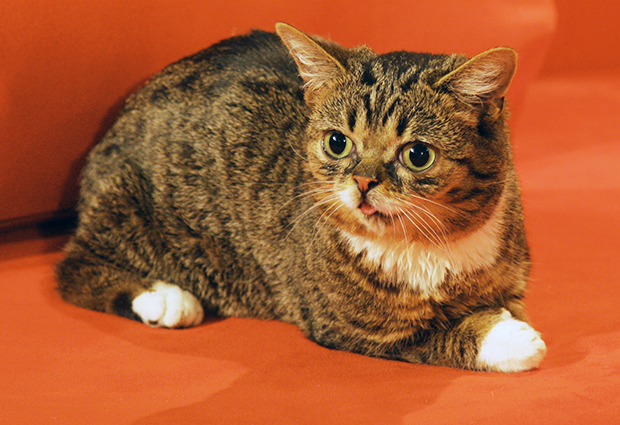
Read the latest Issue
Take one celebrity cat, add three curious and candid geneticists, and what do you get? LilBubome: a crowdfunding enterprise co-organised by EMBL alumna Uschi Symmons, whose latest blog post introduces the project.

I’ve been busy setting up a new project with two friends (and former collaborators) of mine: to sequence the genome of Lil Bub, an Internet celebrity cat – with the help of crowdfunding. We’ve christened the project theLilBubome, and after many months of preparation we’ve finally launched our blog, our twitter account and our facebook page. The crowdfunding started today.

It’s a project I’m incredibly excited about for many reasons:
Lil Bub is not just an Internet celebrity cat. First she’s more than cute cat photos and viral youtube videos – she also uses her fame to raise money for pets with special needs. Moreover, she’s got a bunch of fascinating traits: she’s tiny, she has polydactyly (extra toes on all her paws), her lower jaw is very small (which is why you can see her tongue hanging out on most of her pictures), she has no teeth and she has a rare bone defect, diagnosed as osteopetrosis. Each of these traits on its own has been seen before in human patients and in other animals, including mice that I studied during my PhD. But the combination of these traits is unique, so sequencing Lil Bub’s genome might help us decide if she just has a very unusual form of a disease (for example osteopetrosis), or if she’s just unlucky, and was actually born with multiple rare diseases.
With the LilBubome we hope to attract a broader audience: people who might not care about science and genetics, but who do care about Lil Bub and what makes her so special
Engaging the public in science is something I love to do. But sometimes I feel that with traditional science outreach (interactive science museums, TED Talks, PopSci events) we are preaching to the choir, only reaching people who are already interested in science. With the LilBubome we hope to attract a broader audience: people who might not care about science and genetics, but who do care about Lil Bub and what makes her so special.
When Angelina Jolie had her breasts and – more recently – her fallopian tubes and ovaries removed, many of my non-scientists friends asked me about the genetic test that prompted her decision. Apparently the number of people getting tested for breast cancer increased by 40% after her first op-ed in the New York Times. This has been dubbed the Angelina Jolie effect*. We’re hoping that we can maybe achieve a similar effect (the Bub effect?), inspiring people to learn more about sequencing and the information you can read out of a genome sequence.
On our blog and various media channels we want to engage with everyone and anyone directly, answer questions and explain what we’re doing in detail.
The science-funding landscape is changing. Currently national science budgets are decreasing around the globe. Crowdfunding and donations from the public can clearly make a difference; you need only think of last year’s #IceBucketChallenge. There’s a lot of debate among scientists about how crowdfunding should relate to traditional science funding, but I think there is the possibility for peaceful co-existence of the two: It would be difficult to convince any grant-giving organisation to fund the LilBubome. After all, if we wanted to study osteopetrosis or polydactyly there are probably more systematic, experimentally tangible approaches. However, that does not mean it’s not an interesting project or that we’re not curious to unlock the genetic secret behind Lil Bub’s special traits. And if other people think the way we do, we hope that they will vote with their feet. In exchange, we’ll share everything we do in the project, making our research a public good.
I don’t know if the LilBubome will work out, but I hope it will. If you’re as curious as we are, please do follow us on one of our channels.
*Some have criticised that the Jolie effect was superficial, with many women seeing their doctors to get tested, without actually understanding (or trying to understand) the science behind genetic testing for breast cancer. We hope the Bub effect (if it does happen) will be different, hence our efforts to explain the science behind the project in detail.
Looking for past print editions of EMBLetc.? Browse our archive, going back 20 years.
EMBLetc. archive